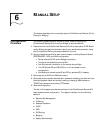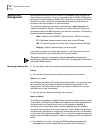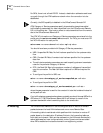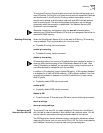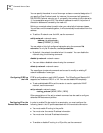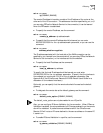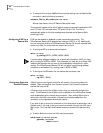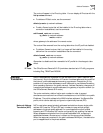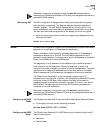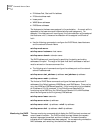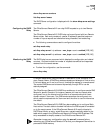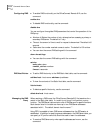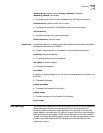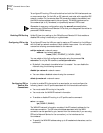
Address Translation 6-9
The route will appear in the IP routing table. You can display all IP routes with the
list ip routes command.
■ To delete an IP Static route, use the command:
delete ip route <ip network address>
■ To add a Framed route that will be installed in the IP routing table when a
connection is established, use the command:
add framed_route vc <vc name>
ip_route <ip network address>
metric <metric>
where gateway is the address of the remote router.
The route will be removed from the routing table when the VC profile is disabled.
■ To delete a Framed route so that it no longer will be installed in the routing
table when the connection is established use the command:
delete framed_route vc <vc name>
ip_route <ip network address>
Remember to disable and then re-enable the VC profile for the change to take
effect.
IP Tools The OfficeConnect Remote 812 CLI provides a standard set of IP utility programs
including Ping, TELNET and RLOGIN.
Address
Translation
Public IP addresses are registered and can be used within a public network (e.g.,
the Internet). Due to the limitation of IP version 4 address space and the growth of
the Internet, public addresses are becoming more scarce. One solution to this
problem is to use private addresses on small LANs and to use Address Translation
when accessing devices on the public network. Address Translation changes an IP
frame’s private address to a public address at the gateway of a public network (i.e.
the OfficeConnect Remote 812 router).
The router maintains a table of active port numbers in order to support
simultaneous connections from different workstations on the LAN with one public
IP address. The public address is the WAN interface address of the Remote Site
profile, which can be statically configured or dyanmically learned (PPP).
Network Address
Translation (NAT)
NAT is used when several privately addressed workstations share a single public
address. NAT uses the TCP and UDP port numbers to map multiple private
addresses to the single public address. For normal applications such as Web
browsing and FTP transfers, NAT can be configured by just enabling the feature.
When accesses are originated from the private addressed LAN, a mapping is
established between the source port number and the source private address.
When the response is received on the public addressed WAN port, the destination
port is mapped back to the private address.



